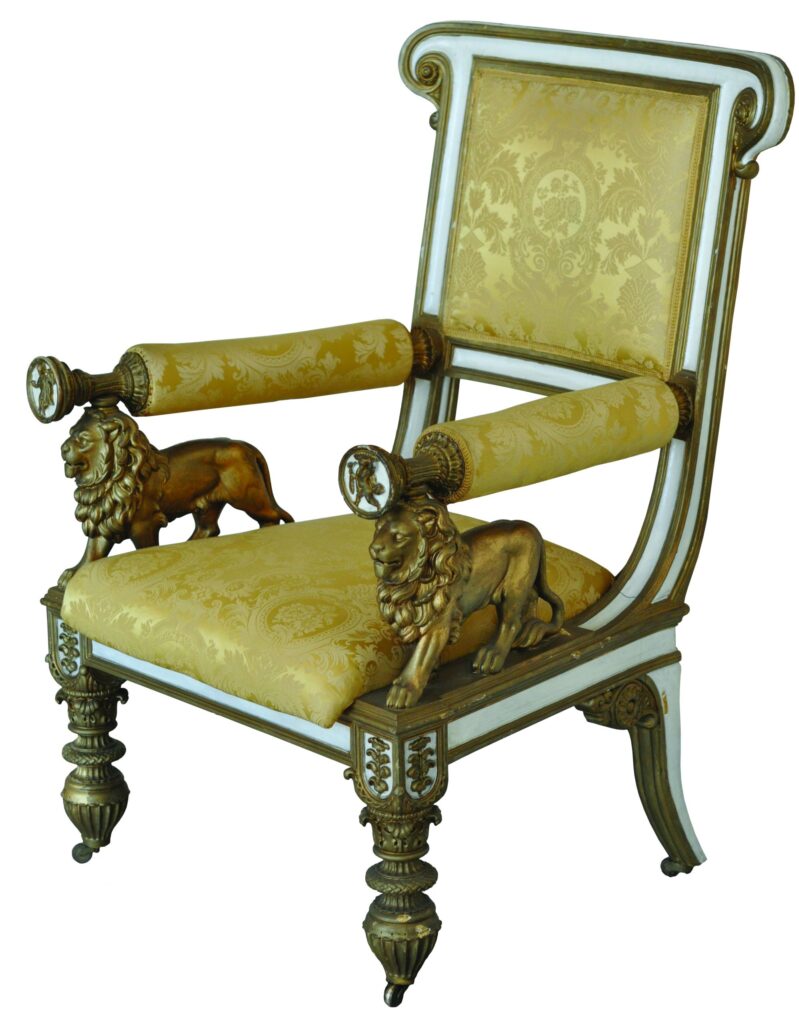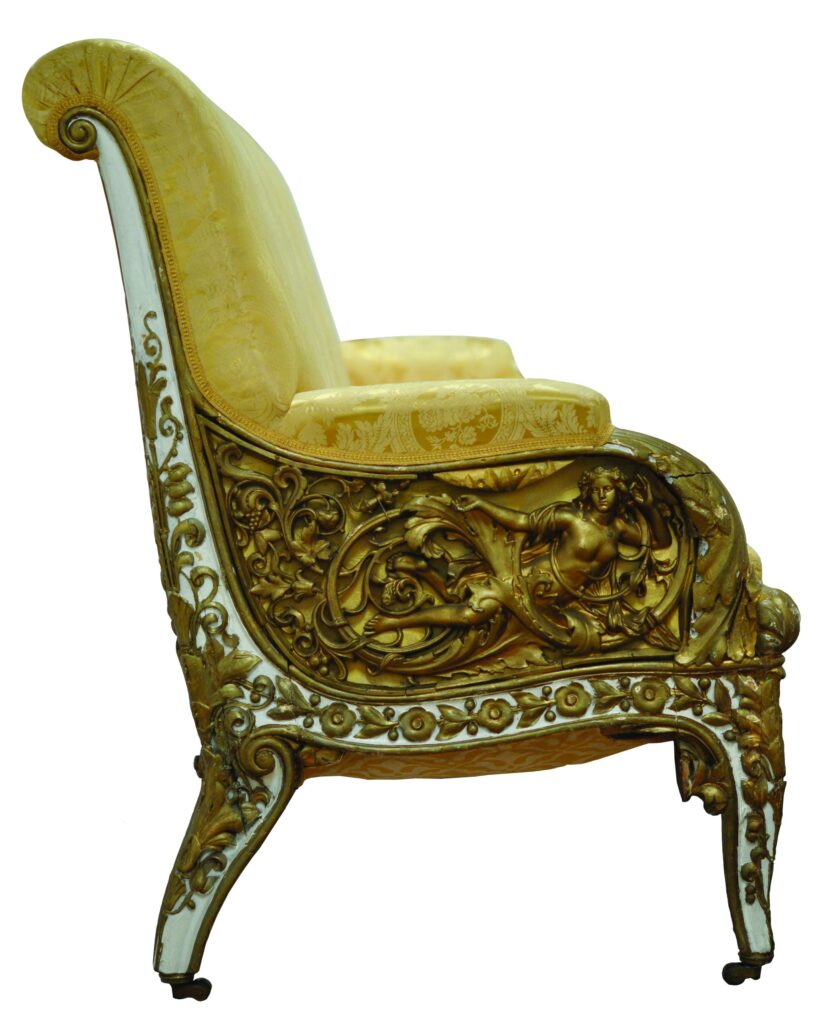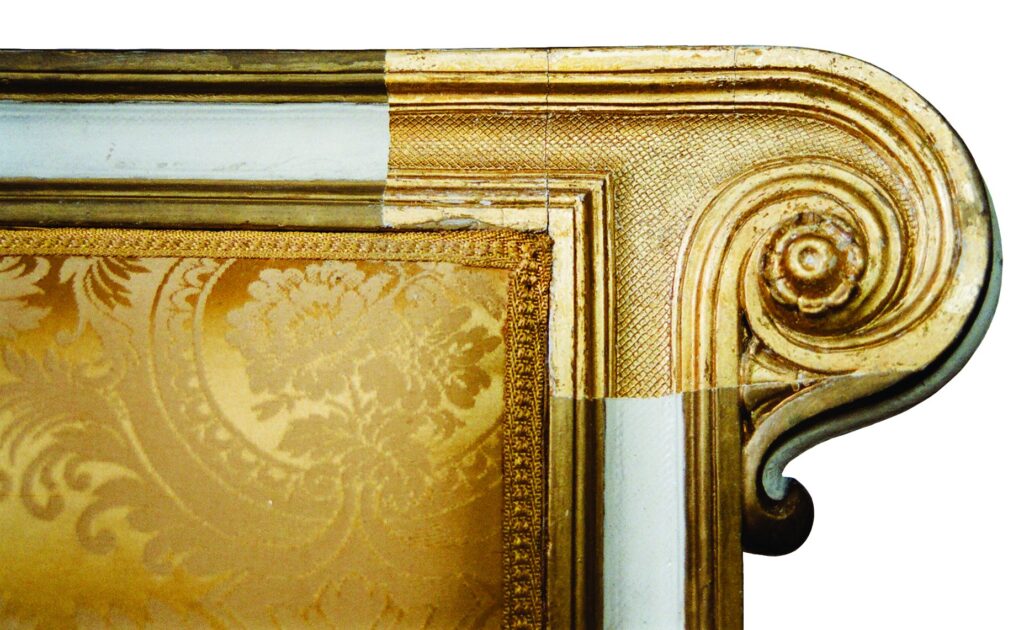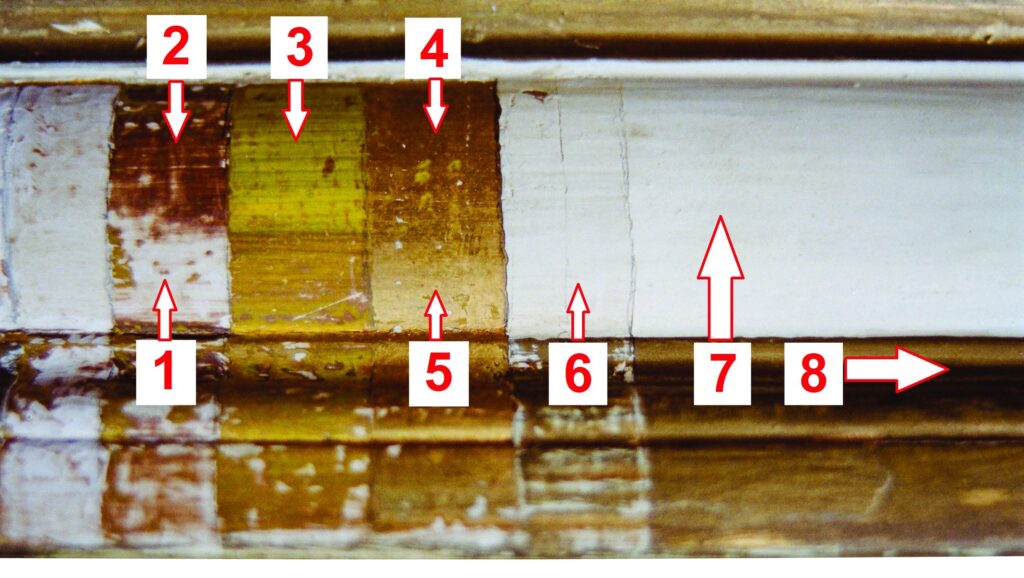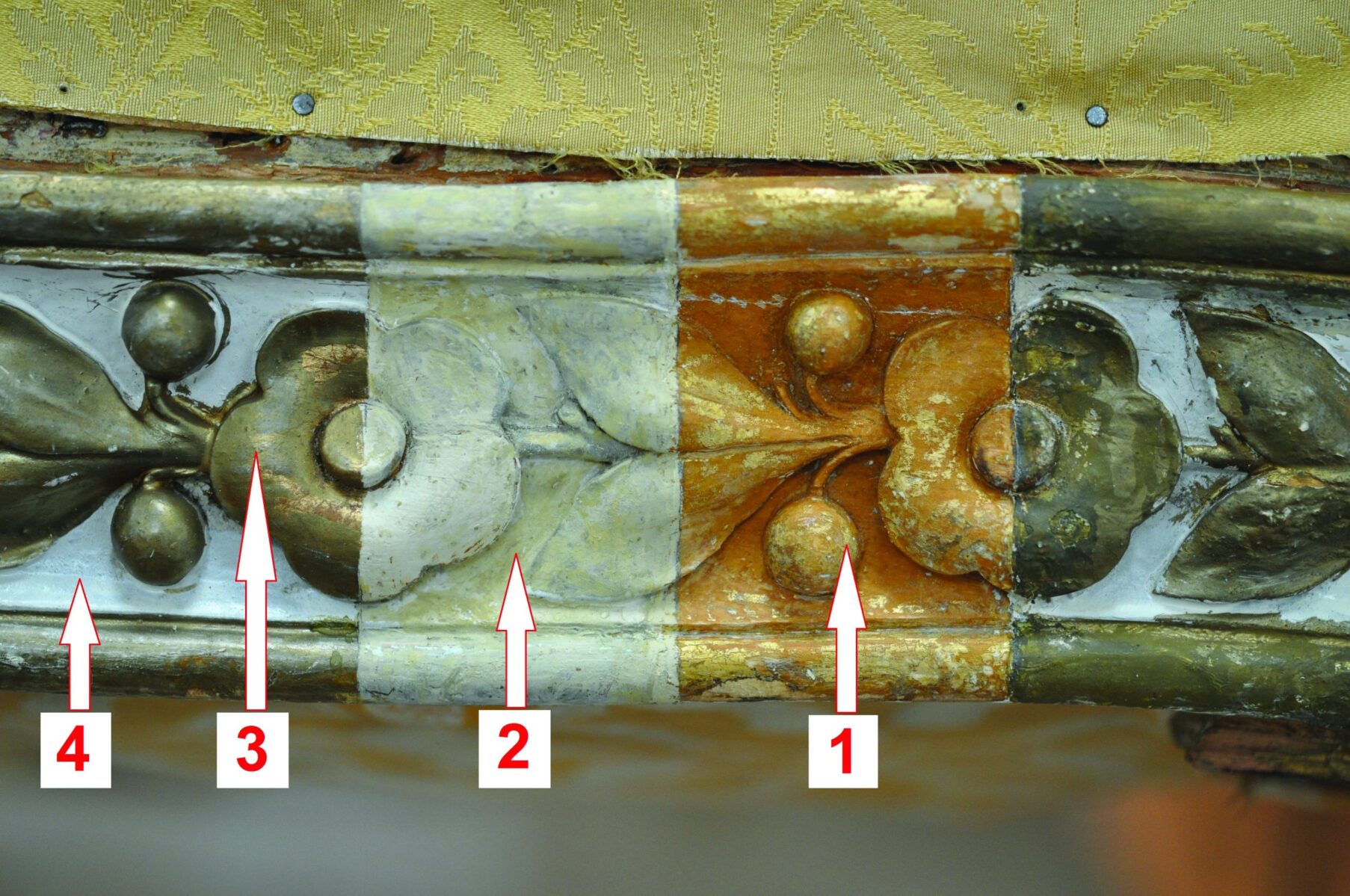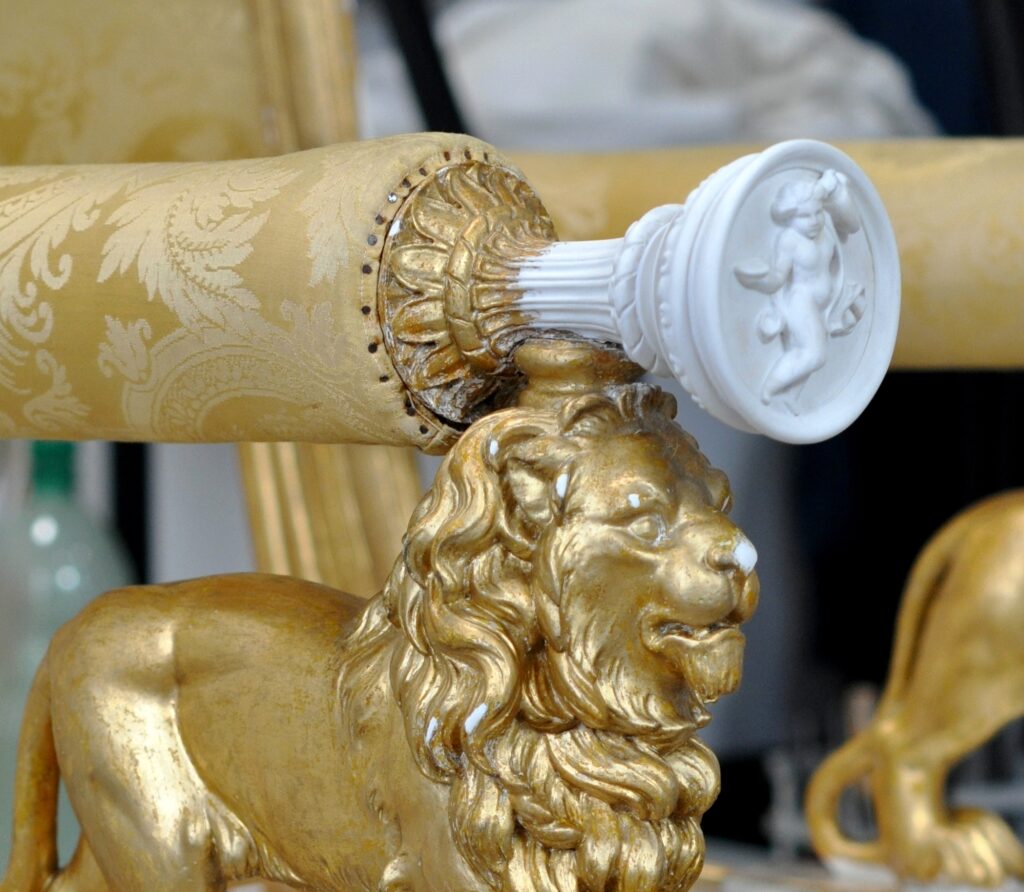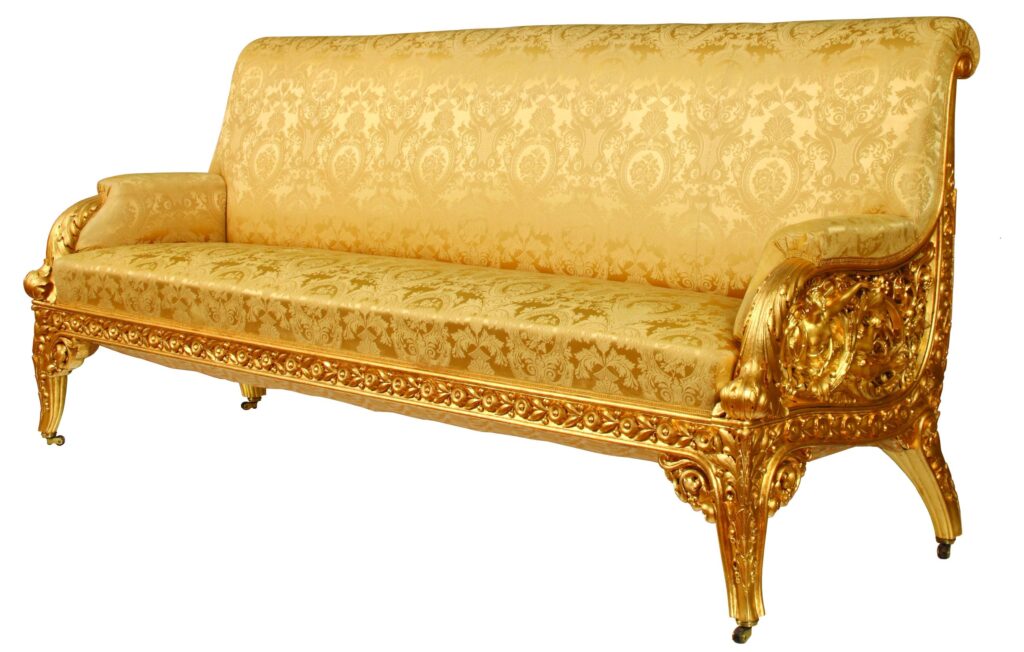
Bench
France, around 1810
carved wood; gilding; recent upholstery and decorative trimmings
h. 102 cm; l. 230 cm; depth 68 cm
no. ATM 1894
Bibl.: Ratković Bukovčan, 2007.; Ratković Bukovčan, Bogdanović, Petrinić, Desnica, Šatović, 2015, p. 12, 13, 32, 34, 36, 37; Lit.: Payne (ed.) 1989., p. 89; Bizot 1992., p. 33.
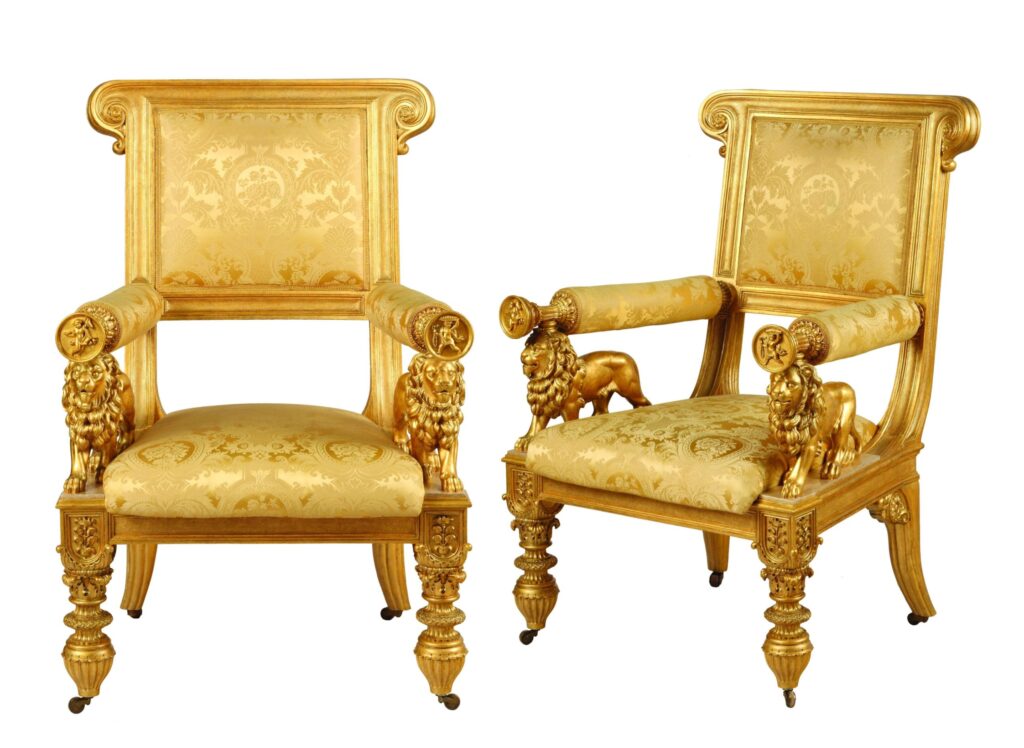
Armchairs
France, around 1810.
carved wood; gilding; silvering; recent upholstery and decorative trimmings
h. 108 cm; w. 70 cm; depth 65 cm
no. ATM 1894 a, no. ATM 1894 d
Bibl.: Ratković Bukovčan, 2007.; Ratković Bukovčan, Bogdanović, Petrinić, Desnica, Šatović, 2015, p. 12, 13, 32, 34, 36, 37; Lit.: Payne (ed.) 1989., p. 89; Bizot 1992., p. 33.
The primary focus of restoration work was on removal of overpaint and non-original material, as well as on the reconstruction of the decayed carvings in order to achieve the best level of conservation and presentation of the original condition of the artefact. Polychrome investigation revealed two chronological layers on the bench and three on the armchairs. The same secondary layers were discovered on the bench and the armchairs, with the exception of the first overpaint of the armchairs (which does not exist on the bench). This information obtained by comparative investigation shows that there is a possibility that the bench and the armchairs were not originally part of the same set, while differences in typological patterns of the carving and the method of gilding are further evidence of such a possibility. Since the set consists of the bench and four armchairs (nos. ATM 1894 b and c are not exhibited), it should be emphasised that the homogeneity of the armchairs is also questionable. The armchair no. ATM 1894 d stands apart from the others in terms of the difference of carvings on the back, as well the colour of the poliment. From everything said above it follows that the exhibited armchairs and the bench were probably parts of three different sets originally. Since investigations have shown that the original gilding is preserved to a large extent, the decision was made to remove all overpaint from it.
Goran Petrinić
senior conservation technician
at the Mimara Museum
The carvings and wood frames suffered various kinds of major damage, which has been thoroughly repaired. In the previous conservation some missing parts were reconstructed, but those have been replaced by new ones because of poor workmanship. The greatest damage was found on the right side of the bench, where there was a gilded bronze relief, which had been broken into three pieces of which one was missing. The missing part has been reconstructed using brass and araldite.
In the past the fabrics had been replaced several times, but not after the original pattern. The original red brocade had been replaced by a gold one, and gold brocade had also been used in the reupholstering after that. After further analysis of the multi-layered remains of the brocade on the set, a decision will be taken on whether the existing brocade should be replaced in order to restore and present the original condition of the artefact.
Graphic representation of the cross-section of the frame
of the armchair by layer:
black – mesh relief ground (fabric)
yellow – original gilding with a chalk base
red – first partial overpaint, with imitation gold
white – second overpaint, with white tone oil paint
light yellow – third overpaint, with white tone oil paint
green – third overpaint, with bronze tone paint
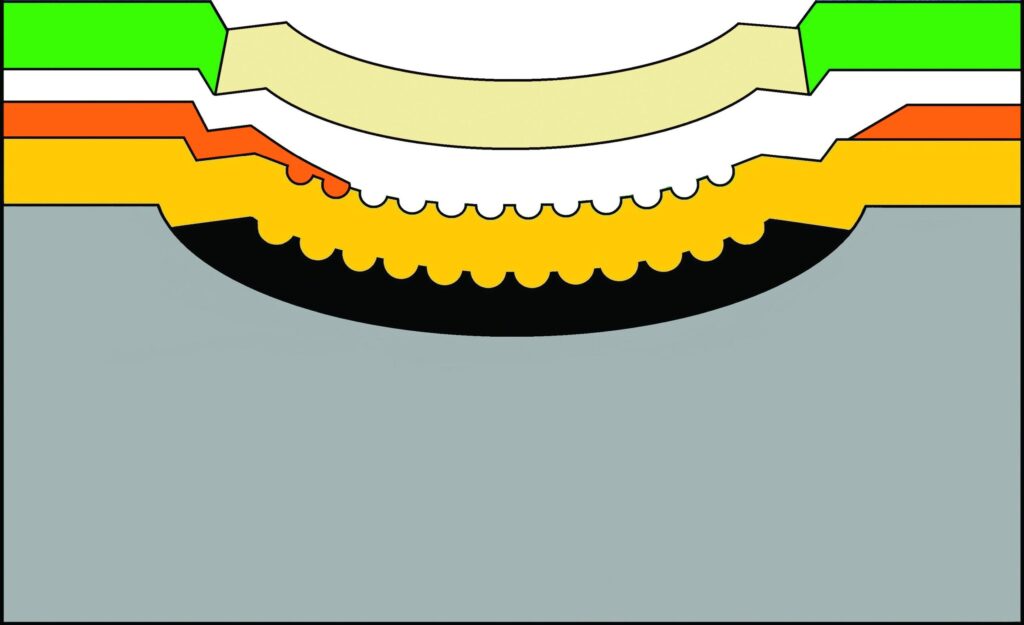
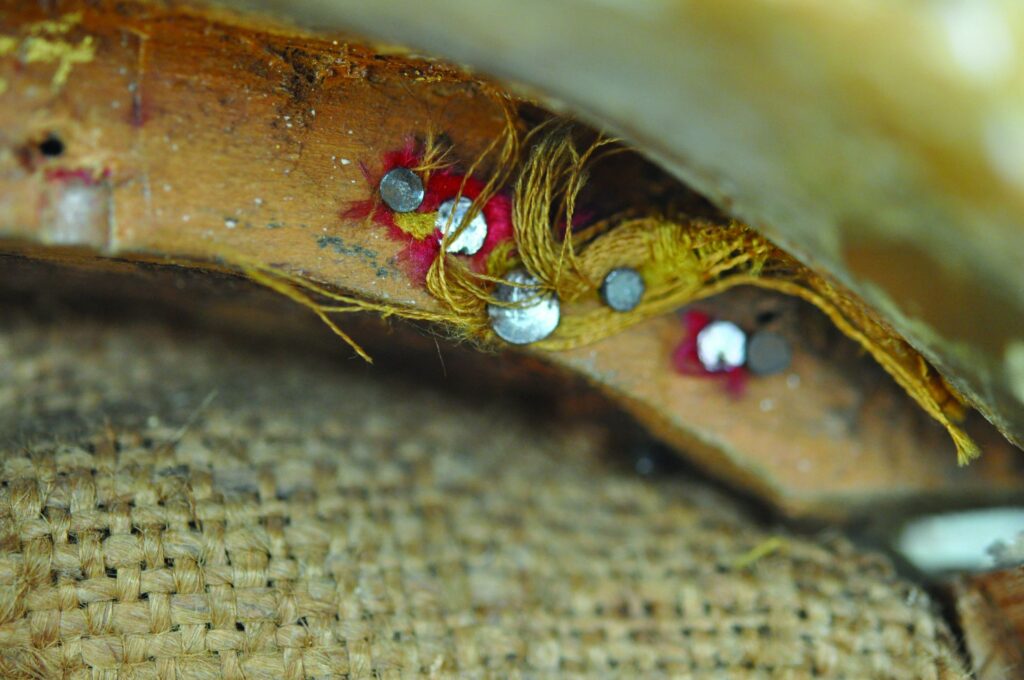
Fragments of old layers of brocade on the bench point to a chronological sequence of replacements (the red under the gold)
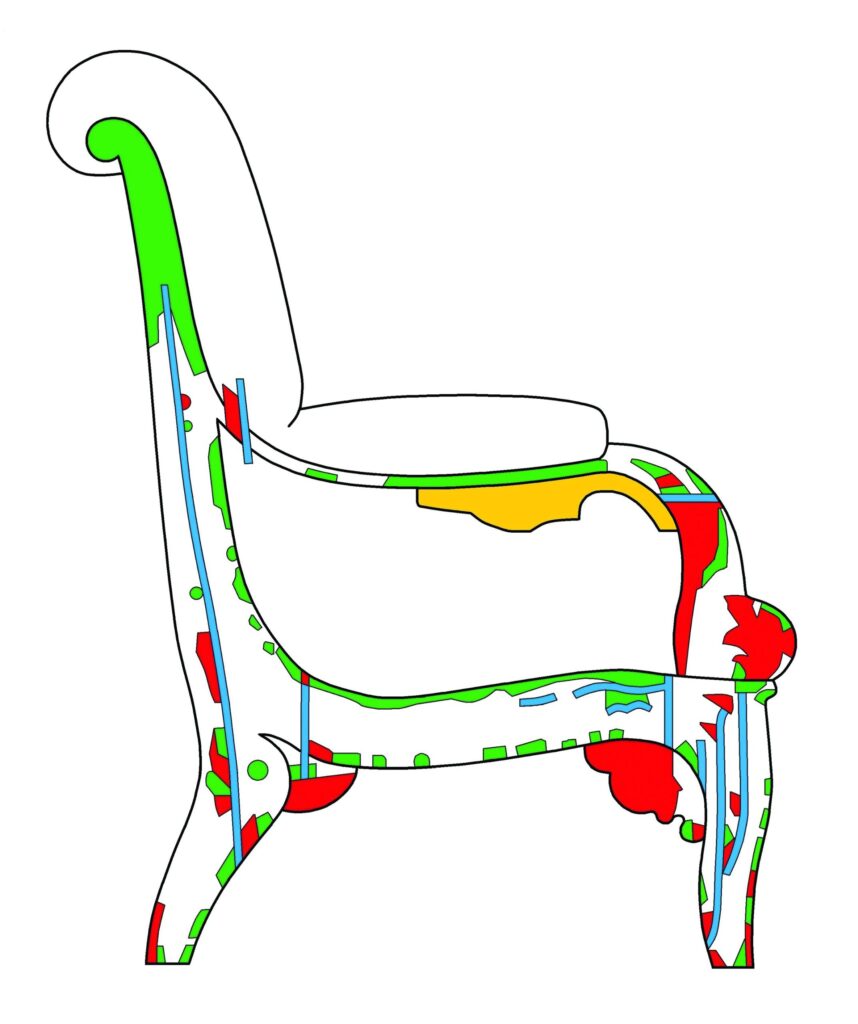
Diagram of the damage on the right side of the bench:
green – surface damage to the wood
red – missing parts of the carving
blue – breaks and cracks in the wood
yellow – missing part of the bronze relief
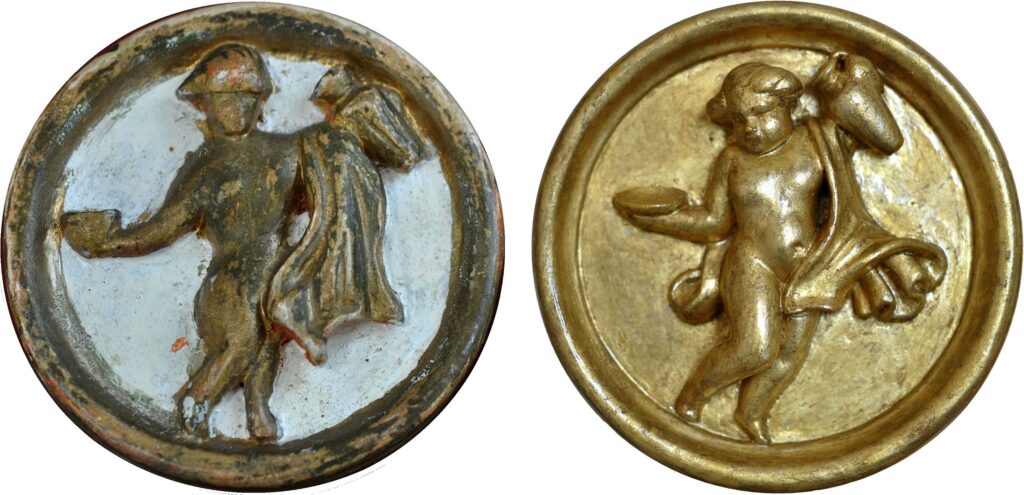
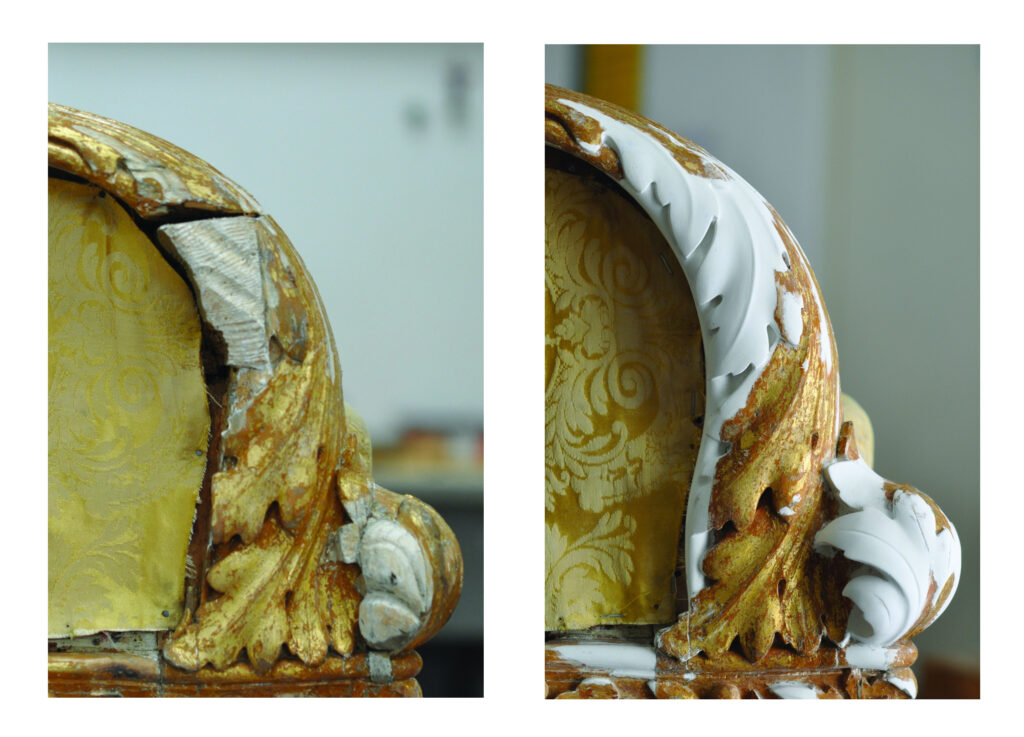
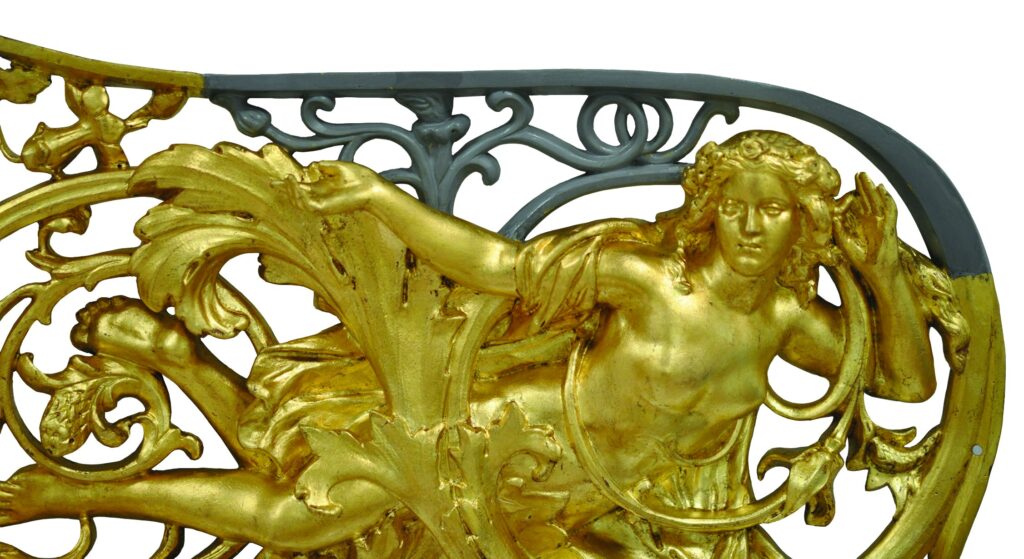
The armchairs after the completion of conservation and restoration work:



